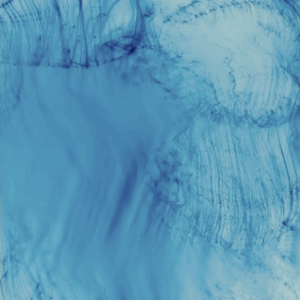JTF (just the facts): A total of 14 large scale color works, framed in white and unmatted, and hung against white walls in the two rooms of the main gallery space, the smaller front room, and the entrance area. All of the works are unique picotage with spray paint, acrylic paint, and/or gouache on inkjet prints, mounted on museum board and sintra, made in 2020-2021. Physical sizes range from 60×40 to 72×104 inches (or the reverse), and all the works are unique. (Installation shots below.)
Comments/Context: Taking inspiration from the death of George Floyd and the racial justice uprisings of the past year, Paul Anthony Smith’s new works center on Black men and the celebrations and memories we have for those who have been lost. His works actively wrestle with the rituals of grief and mourning, and experiment with approaches to visualizing the presence of passing spirits.
Smith’s 2019 gallery show (reviewed here) was our first introduction to his picotage technique. Starting with large scale enlargements of photographic snapshots, Smith painstakingly scrapes away tiny dots from the surface of the print, exposing the white paper underneath. Fields of these dots then create a veiling effect over the underlying image, the whiteness shifting depending on the density of the dots and the viewing angle. In his earlier works, Smith largely used this approach to overlay geometric patterns atop his photographs, adding representations that took on the forms of fences, bricks, and decorative cement blocks, especially those common to Caribbean architecture.
And while a few ornate picotage gateways do make appearances in this new show, they now represent a spiritual rather than a physical barrier, with sunsets and beach scenes set behind fences and gates, offering a glimpse of the heavenly locales available to those who can pass through. Most of the other photographs were taken at funerals and late night gatherings, where mourners have congregated to tell stories and have a few drinks. When the geometric breeze block patterns appear here, they seem to create ghostly barriers, preventing family members and revelers from crossing to the other side.
In most of his new works, Smith has largely evolved his picotage approach, using his meticulous arrays of white dots to carefully cover faces and bodies like masks or costumes, in some cases obscuring individuals, in others creating a ghostly soul-separating-from-body effect. In some cases, the picotage wafts around people like hovering clouds of camouflage, blowing in and around portrait sitters like unseen spirits. Smith has also augmented the picotage with fine mists of spray paint and small areas of more intricate overpainting, further pushing the pictures away from photographic documentation and toward expressive re-interpretation.
Smith’s underlying photographs take the form of everyday snapshots, but his surface modifications give those mundane pictures a sense of layered reality. In Dog an Duppy Drink Rum, a group of men gather after a funeral, hanging out and posing for a group picture. But at the far left, Smith has added a dark human silhouette (the dog is between its legs), creating the subtle appearance of the deceased; the furthest left mourner seems in fact to “see” this spirit, his head turned back at the moment of the shutter click. The female mourners gathered at the bar in another untitled image look back to an unseen figure in the same way. Their faces have been covered and clouded by the picotage, but the magic seems to be taking place off camera. And in a series of portraits of Black men entitled Islands, Smith uses the picotage like invisible camouflage, the areas of misty white drifting in and out, perhaps protecting the men or making their seemingly simple realities quite a bit more nuanced and mysterious.
In some of Smith’s less successful compositions, the picotage covers faces in ways that drift toward surreal strangeness, like alternate personalities coming forth or bodies being possessed. But when the additions are more subtle, the works feel energized and hyper alive, as though unseen forces have suddenly become momentarily visible, the casualness of the snapshots suddenly infused with something more.
In the spread of Smith’s two recent shows, he shown us that he can use his signature picotage motif to thoughtfully represent history, memory, and other potent invisible spirits. It’s a handcrafted and personal approach to augmenting what a photograph can show us, and it continues to open artistic doors in unexpectedly elegant aesthetic ways.
Collector’s POV: The works in this show are priced at $24000 or $55000, based on size. Smith’s work has not yet reached the secondary markets with any regularity, so gallery retail likely remains the best option for those collectors interested in following up.













